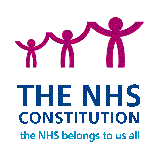FD Handbook
Several different methods of assessment are used throughout the year in Dental Foundation Training. Many of the methods will be used by your ES, but some involve other members of the dental team, or people from outside the practice. Here is a list of some of the assessment tools and an introduction to their use.
ADEPT
The ADEPT (A Dental Evaluation of Performance Tool) form is a record of an assessment of your dental performance in a clinical situation.
You are observed whilst you provide dental treatment for a patient, usually by your ES, and an assessment is made of your performance. The clinical situation is recorded at the top of the form. This will cover one or more of the listed clinical competencies, which need to be identified. The assessor scores your performance in each of the categories, and then will spend time with you giving feedback and discussing the learning needs which are highlighted by your assessment. Once feedback has been given, you assessor also gives a score on your insight into your performance.
You need to have been assessed in all eleven clinical domains, and at least one assessor, other than your ES must be involved, e.g. TPD or another ES.
Complete: 11 by end of month 5 and continue to complete 18 by end of month 9
CbD
The CbD (Case-based Discussion) form is a record of an assessment of your dental performance made from a presentation of clinical treatment you have carried out.
You provide a verbal presentation of your management of case, usually to your Educational Supervisor, using the clinical records, radiographs, models, photographs, etc. that are relevant. An assessment is then made of your performance.
The clinical situation is recorded at the top of the form. This will cover one or more of the listed clinical competencies, which need to be identified.
The assessor scores your performance in each of the categories, and then will spend time with you giving feedback and discussing the learning needs which are highlighted by your assessment. Once feedback has been given, youR assessor also gives a score on your insight into your performance.
You need to complete at least ten CbDs before the end of the Month 9, of which three need to be completed before the end of Month 6.
One CbD will need to be presented formally and assessed at the Scheme study day.
The Direct Observation of Procedural Skills (DOPS) is an exercise carried out within the first eight weeks of practice. The DOPS form are used to record your ES’s observations and assessment of your performance whilst you carry out two clinical procedures on separate occasions: one is a new patient exam, the other is provision of a simple restoration.
After observing you carry out the procedure your ES scores your performance in each of the categories, and then will spend time with you giving feedback and discussing the learning needs which are highlighted by your assessment.
This forms part of your Early Stage Review, an informed assessment of progress and performance in your initial stages in practice.
MSF
This Multi-Source Feedback (MSF) exercise is one to gain feedback from your dental team and colleagues. A template form is given by you to each of your colleagues and team members (at least eight). These are returned anonymously to your Educational Supervisor and the content then analysed and presented to you for your reflection. This is a very powerful assessment tool and will be very helpful in your development.
PSQ
The Patient Satisfaction Questionnaire (PSQ) is a form which is given to 50 consecutive patients within a 4-week period. This is often done by the receptionist. A minimum of 20 returned questionnaires are required but it will be helpful to you if you gain more responses. The content of the forms is analysed and reported to you. Reflection on your patient feedback helps you to understand how your treatment provision is regarded by others.

